 W
WAcanthocephala thomasi, the giant agave bug, is a species of leaf-footed bug in the family Coreidae. It is found in Central America and North America.
 W
WAeoloplides turnbulli, known generally as thistle grasshopper, is a species of spur-throated grasshopper in the family Acrididae. Other common names include the Russian thistle grasshopper and saltbush grasshopper. It is found in North America.
 W
WAgapostemon texanus, also known as the green sweat bee, is a bee found in North America.
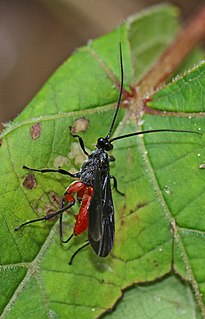 W
WAlabagrus texanus is a species of braconid wasp in the family Braconidae.
 W
WAnax georgius is a species of large dragonfly of the family Aeshnidae, commonly known as the Kimberley emperor. It inhabits ponds in the Kimberley area of Western Australia
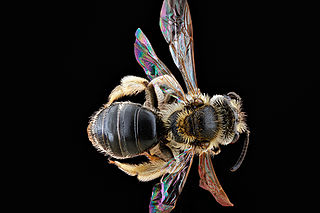 W
WThe imitator miner bee is a species of miner bee in the family Andrenidae. It is found in North America.
 W
WAndrena miserabilis, the smooth-faced miner bee or miserable andrena, is a species of miner bee in the family Andrenidae. It is found in Central America and North America.
 W
WBombus variabilis is a critically endangered species of cuckoo bumblebee.
 W
WCapnobotes fuliginosus is a species of katydid known as the sooty longwing. It is found in the western United States and Mexico. It is omnivorous and it is the prey of the wasp Palmodes praestans.
 W
WCentris lanosa is a species of centridine bee in the family Apidae. It is found in North America.
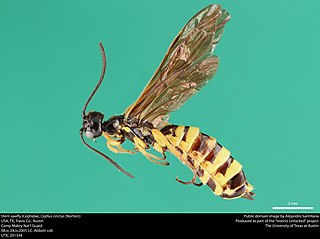 W
WCephus cinctus, also known as wheat stem sawfly, is a slow flying, yellow and black coloured, destructive pest found mainly in western North America.
 W
WChlorochroa sayi, or Say's stink bug, is a species of stink bug in the family Pentatomidae. It is found in North America.
 W
WChlorochroa uhleri, or Uhler's stink bug, is a species of stink bug in the family Pentatomidae. It is found in Central America and North America.
 W
WChrysopilus modestus is a species of snipe flies in the family Rhagionidae.
 W
WCordylobia anthropophaga, the mango fly, tumbu fly, tumba fly, putzi fly, or skin maggot fly, is a species of blow-fly common in East and Central Africa. It is a parasite of large mammals during its larval stage. C. anthropophaga has been endemic in the subtropics of Africa for more than 135 years and is a common cause of myiasis in humans in the region.
 W
WDeraeocoris nebulosus is a species of plant bug in the family Miridae. It is found in North America.
 W
WDerotmema haydenii, or Hayden's grasshopper, is a species of band-winged grasshopper in the family Acrididae. It is found in Central America and North America.
 W
WDiadasia enavata, the sunflower chimney bee, is a species of chimney bee in the family Apidae. It is found in Central America and North America.
 W
WEmpis concolor is a species of fly in the family Empididae. It is found in the Palearctic.
 W
WHalictus gemmeus is a species of bee in the family Halictidae, the sweat bees.
 W
WHesperotettix speciosus, known generally as the showy grasshopper or handsome purple-striped grasshopper, is a species of spur-throated grasshopper in the family Acrididae. It is found in North America.
 W
WHolcostethus limbolarius is a species of stink bug in the family Pentatomidae. It is found in Central America and North America.
 W
WHoplitimyia constans is a species of soldier fly in the family Stratiomyidae.
 W
WLasiomerus annulatus is a species of damsel bug in the family Nabidae. It is found in North America.
 W
WLitaneutria minor, or the agile ground mantis, is native to the drier regions of North America. L. minor is found in the United States in Colorado, Arizona to Mexico, and the eastern regions of Washington to California. They also can be found in Canada in the southern Okanagan Valley and are Canada's only native mantis. They are very active hunters and will be seen running across the ground from early spring to late summer.
 W
WMegachile albitarsis is a species of bee in the family Megachilidae. It was described by Cresson in 1872.
 W
WMegachile comata is a species of bee in the family Megachilidae. It was described by Cresson in 1872.
 W
WMegachile exilis is a species of bee in the family Megachilidae. It was described by Cresson in 1872.
 W
WMegachile fortis is a species of bee in the family Megachilidae. It was described by Cresson in 1872.
 W
WMegachile frugalis is a species of bee in the family Megachilidae. It was described by Cresson in 1872.
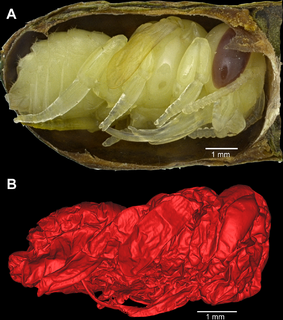 W
WMegachile gentilis is a species of bee in the family Megachilidae. It was described by Cresson in 1872.
 W
WMegachile inimica is a species of bee in the family Megachilidae. It was described by Cresson in 1872.
 W
WMegachile lapponica is a species of bee in the family Megachilidae. It was described by Thomson in 1872.
 W
WMelissodes rivalis is a species of long-horned bee in the family Apidae. It is found in North America.
 W
WMetrioptera saussuriana is a species belonging to the family Tettigoniidae subfamily Tettigoniinae.It is a high meadow species found on many mountains and low mountain ranges in southern Europe. Its range extends in the Iberian Peninsula from Portugal and Spain over the Pyrenees, southern France to the French and Swiss Jura and the southern and western Alps. Isolated populations are to be found in the Balearic Islands, in Corsica, Sardinia, some northwestern French islands and in central Europe near Salzburg. The species is missing in Germany.
 W
WNabis rufusculus is a species of damsel bug in the family Nabidae. It is found in North America.
 W
WNeivamyrmex nigrescens is a North American species of army ant in the genus Neivamyrmex. The species is found in the United States and Mexico, and is the most widely distributed Neivamyrmex species in the United States. Due to its wide range, it has become the most studied and well-known species in its genus.
 W
WNomada texana is a species of bee native to the United States and other parts of North America.
 W
WOpeia obscura, the obscure grasshopper, is a species of slant-faced grasshopper in the family Acrididae. It is found in Central America and North America.
 W
WOsmia subfasciata is a species of bee in the family Megachilidae. It is found in Central America and North America.
 W
WOsmia texana, the Texas osmia, is a species of bee in the family Megachilidae. It is found in Central America and North America.
 W
WPolistes bellicosus is a social paper wasp from the order Hymenoptera typically found within Texas, namely the Houston area. Like other paper wasps, Polistes bellicosus build nests by manipulating exposed fibers into paper to create cells. P. bellicosus often rebuild their nests at least once per colony season due to predation.
 W
WPolymerus venaticus is a species of plant bug in the family Miridae. It is found in North America.
 W
WRhiginia cinctiventris is a species of millipede assassin in the family Reduviidae. It is found in Central America and North America.
 W
WSilvius gigantulus is a species of deer fly in the family Tabanidae.
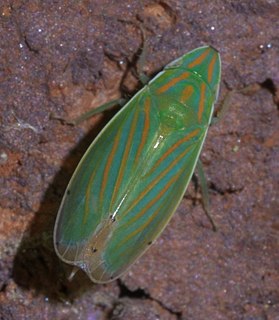 W
WSpangbergiella viridis is a species of leafhopper in the family Cicadellidae.
 W
WSpharagemon collare, the mottled sand grasshopper, is found in sandy-soiled, grassy areas of northern United States and southern Canada. They are known to be a minor pest of wheat crops; however, populations are rarely large enough to cause appreciable damage.
 W
WStelis costalis is a species of bee in the family Megachilidae. It is found in Central America and North America.
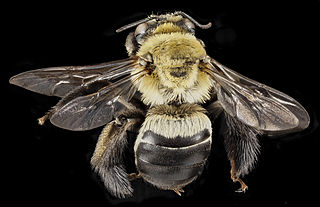 W
WSvastra atripes is a species of long-horned bee in the family Apidae. It is found in North America.
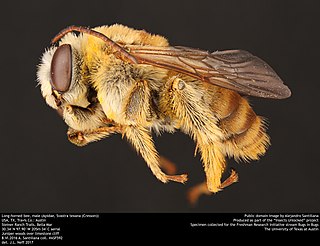 W
WSvastra texana is a species of long-horned bee in the family Apidae. It is found in Central America and North America.
 W
WTrachusa zebrata is a species of bee in the family Megachilidae. It is found in North America.
 W
WTrachyrhachys kiowa, known generally as the Kiowa grasshopper or ash-brown grasshopper, is a species of band-winged grasshopper in the family Acrididae. It is found in Central America and North America.
 W
WUrothemis assignata is a species of dragonfly in the family Libellulidae.
 W
WXylocopa valga is a species of carpenter bee common to: western, central and southern Europe, except for far northern latitudes; the Caucasus; Middle East; Central Asia; and Mongolia. The solitary bee has a black and blue coloured body, 20–27 mm in length, and densely covered with purple hairs. The small wings also have a purple tint. The bee creates cavity nests by gnawing the wood in the trunks of dead trees and in old wooden structures. It inhabits both forests and urban areas.
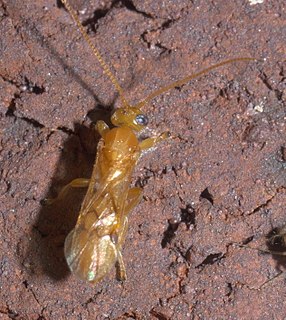 W
WYelicones delicatus is a species of braconid wasp in the family Braconidae.
 W
WZelus cervicalis is a species of assassin bug in the family Reduviidae. It is found in Central America, North America, and South America.